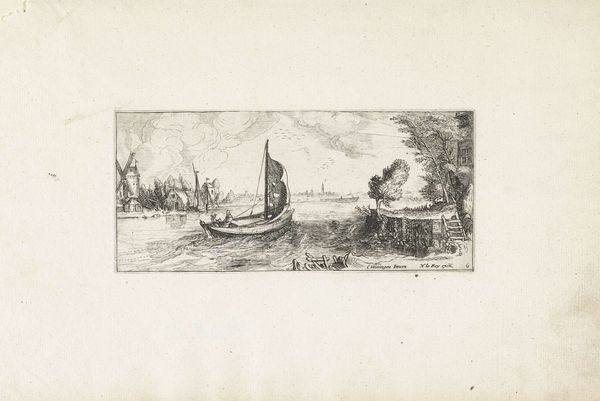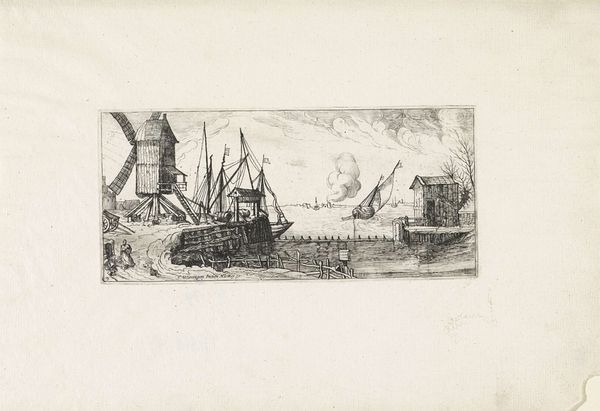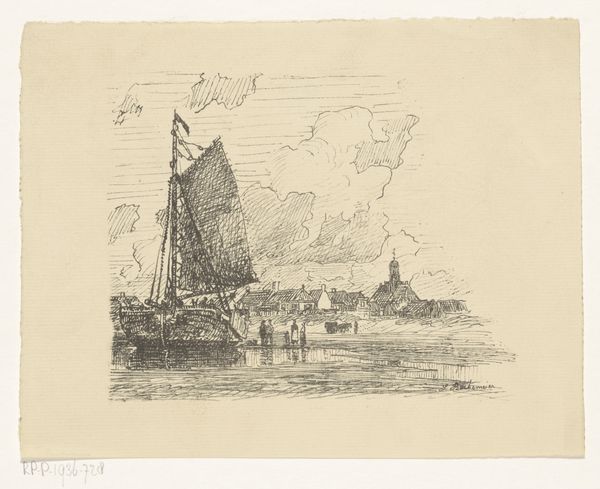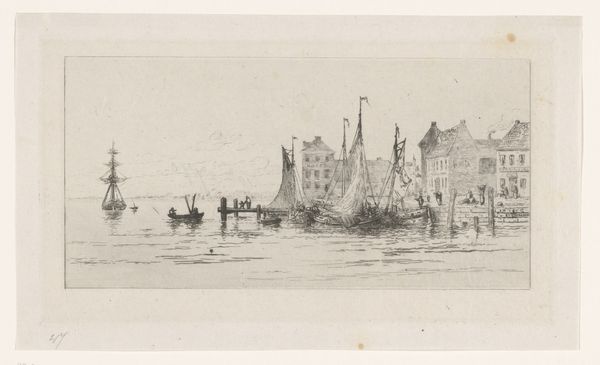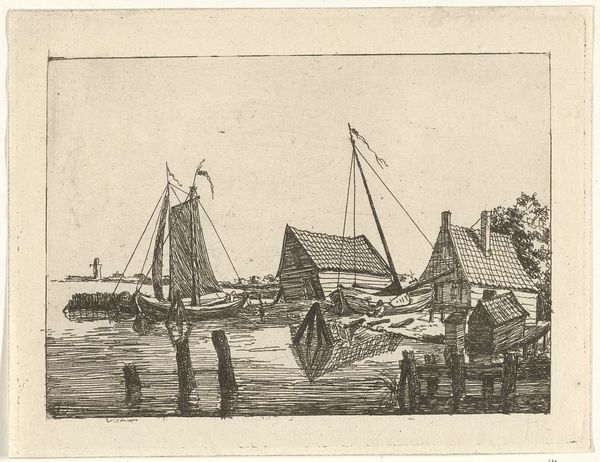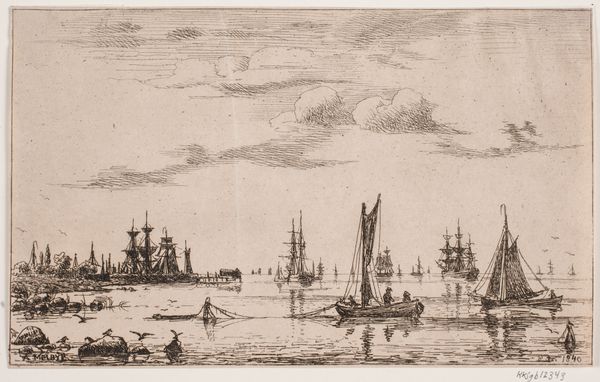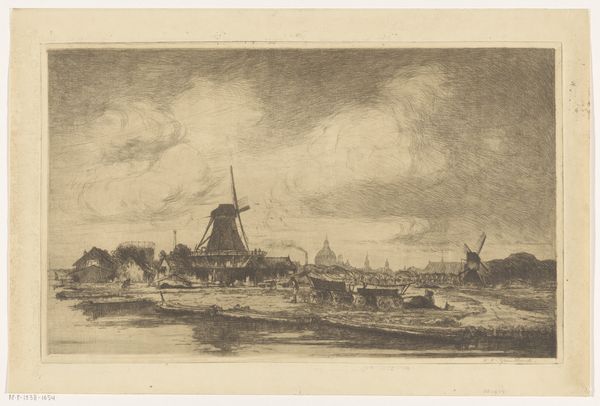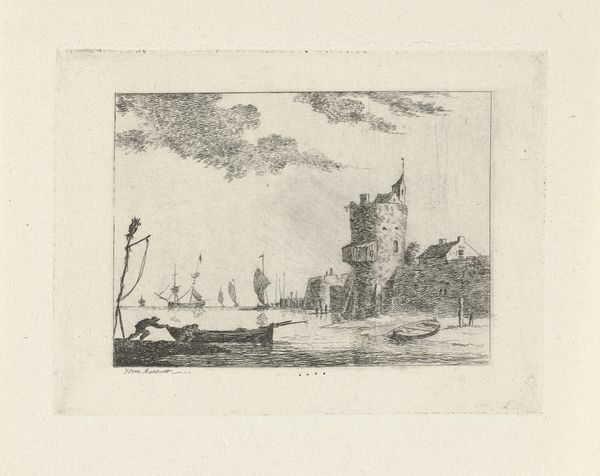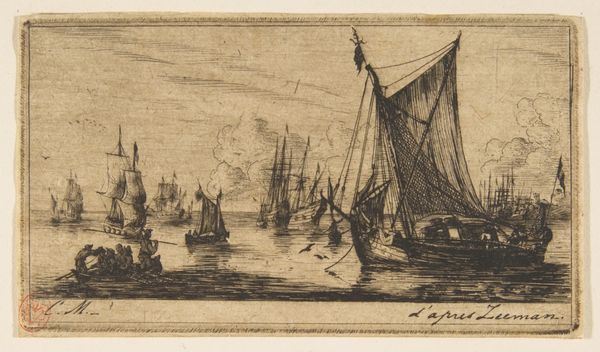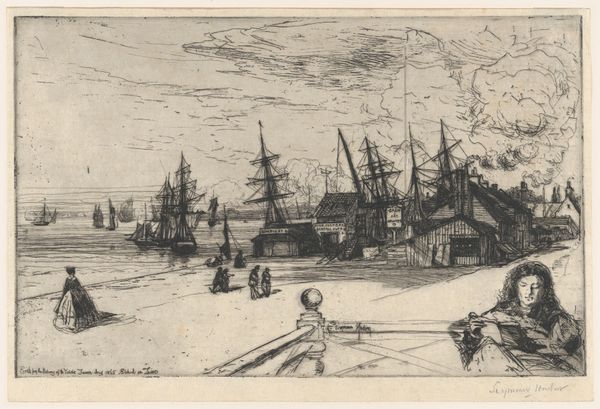
print, etching
#
dutch-golden-age
# print
#
etching
#
landscape
#
cityscape
Dimensions: height 76 mm, width 167 mm
Copyright: Rijks Museum: Open Domain
Curator: What strikes you immediately about this print? Editor: The etching feels industrious, but in a quiet, subdued way. You see the detail of labor within a compact space. Curator: Absolutely. This etching, titled "Gezicht op een haven met een sluis" or "View of a harbor with a lock", was created by Cornelis Claesz. van Wieringen sometime between 1614 and 1618. As a print, what does it tell us about Dutch society at that time? Editor: That's precisely what intrigues me—the scale and the method speak to its accessibility and widespread use. This would be reproducible, affordable, a means of circulating images of maritime power to a broader audience. The focus is always on materials and accessibility. Was Wieringen a captain in this harbor society? Curator: There is not necessarily documented confirmation that he captained, but more about how this harbor's economy facilitated global power dynamics in the Golden Age, impacting gender and racial identities. Editor: So you think that it has relevance and importance for the gender? Why do you find so? Curator: The artist includes multiple smaller boats filled with a workforce. How diverse would you imagine them to be, given the expansion of maritime activities due to Dutch mercantile success? Who were these sailors and dockworkers? Those laboring hands fueled this landscape, it should also be viewed by a political lens. How much social injustice went into this artwork? Editor: Those boats appear almost modular, as a harbor society where labour has been structured in certain directions. Did these designs of harbor's infrastructure give way for new designs and technologies of their boats too? This type of production reflects a shift towards more systematized shipbuilding and logistics. This artwork demonstrates this social mobility and labor economy. I look at this and imagine a worker thinking, how did the making of ships come to be? Curator: Your insights into materials and craft draw out compelling lines of inquiry about labor. This landscape now speaks differently for me. Editor: I like how the work makes you ask questions.
Comments
No comments
Be the first to comment and join the conversation on the ultimate creative platform.
